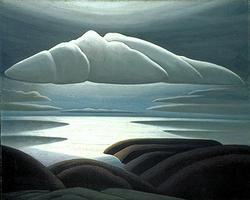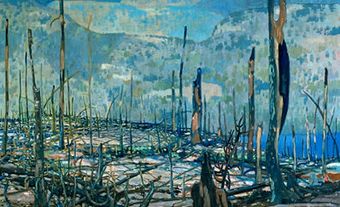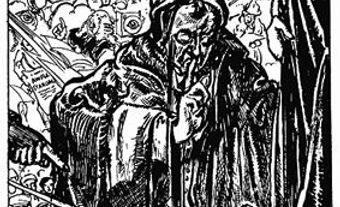Lawren Stewart Harris, painter (born 23 October 1885 in Brantford, ON; died 29 January 1970 in Vancouver, BC). Lawren Harris was the catalyst and leader in the creation of the Group of Seven, founding member and first president of the Canadian Group of Painters, and the painter who influenced Jock Macdonald — and through him, other Toronto painters — to paint abstractly. Harris had a profound influence on three generations of artists in
Early Life, Education, and Career
Harris's father was Thomas Morgan Harris, secretary of A. Harris, Son and Co. Ltd, a manufacturer of farm machinery, which in 1891 amalgamated with Massey to form the Massey-Harris Co. Ltd: Lawren Harris was thus a wealthy man by birth. After attending
The Group of Seven
In 1913, Harris and MacDonald visited and were inspired by an exhibition of contemporary Scandinavian art at the
The Late Mystical Works
As artist-in-residence at
Honours
In his own lifetime, Harris was the subject of two retrospectives, in 1948 and 1963. In 1978, the Art Gallery of Ontario held the exhibition Urban Scenes and Wilderness Landscapes, 1906–1930. In 1982–83, a national travelling exhibition of his drawings was held. A touring exhibition of Harris’ work, curated by American actor, comedian and writer Steve Martin, opens at the

 Share on Facebook
Share on Facebook Share on X
Share on X Share by Email
Share by Email Share on Google Classroom
Share on Google Classroom







